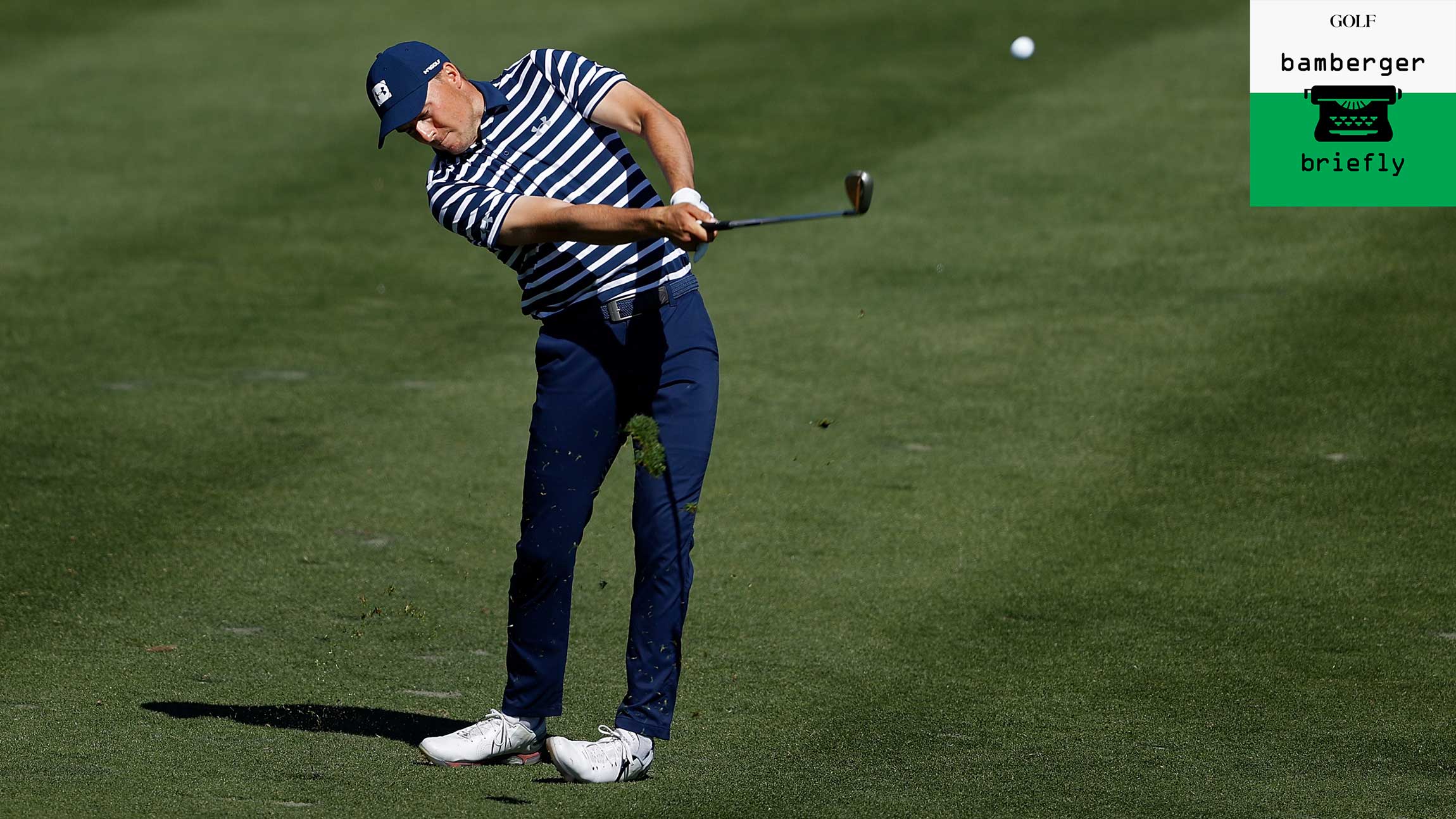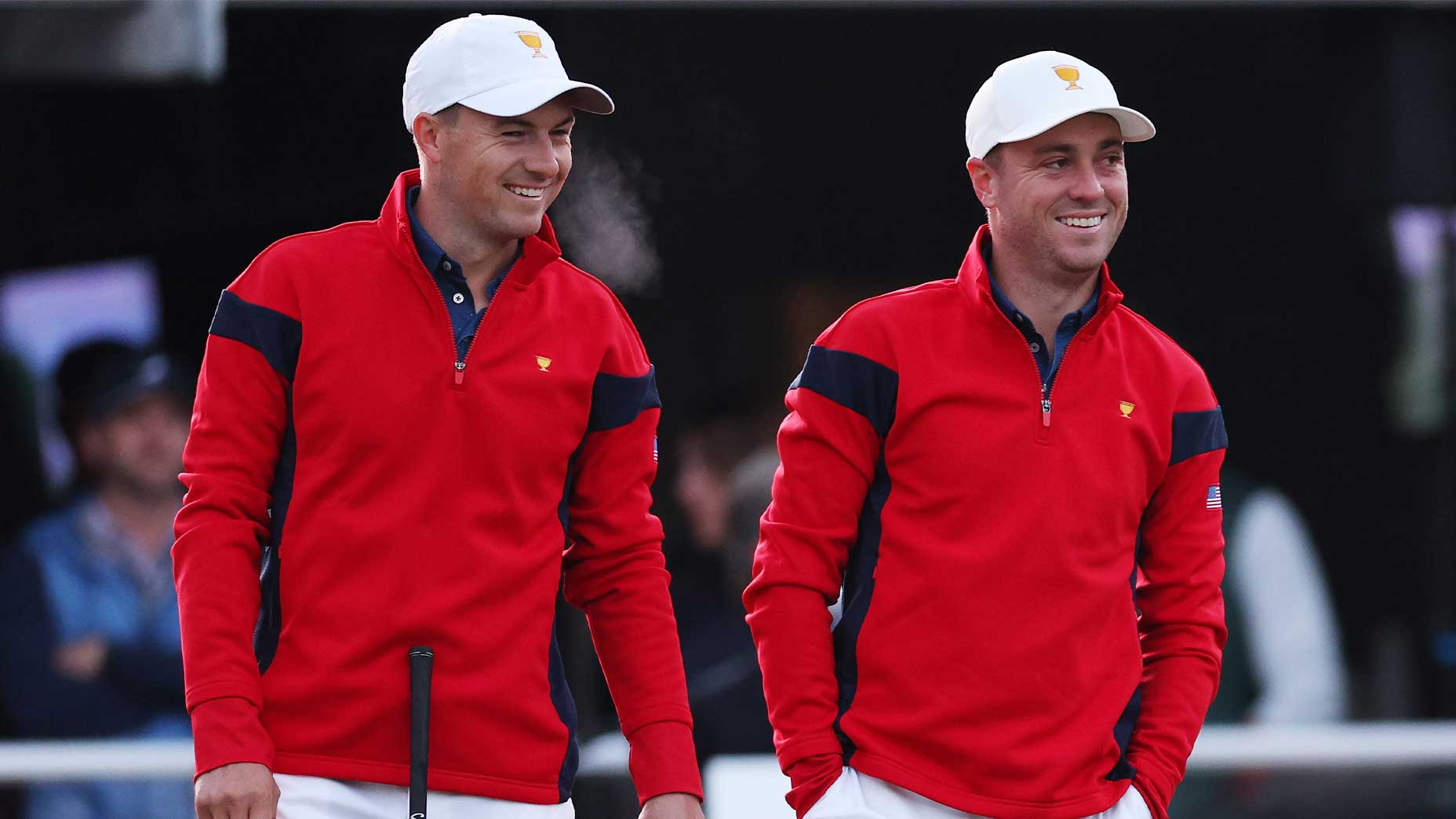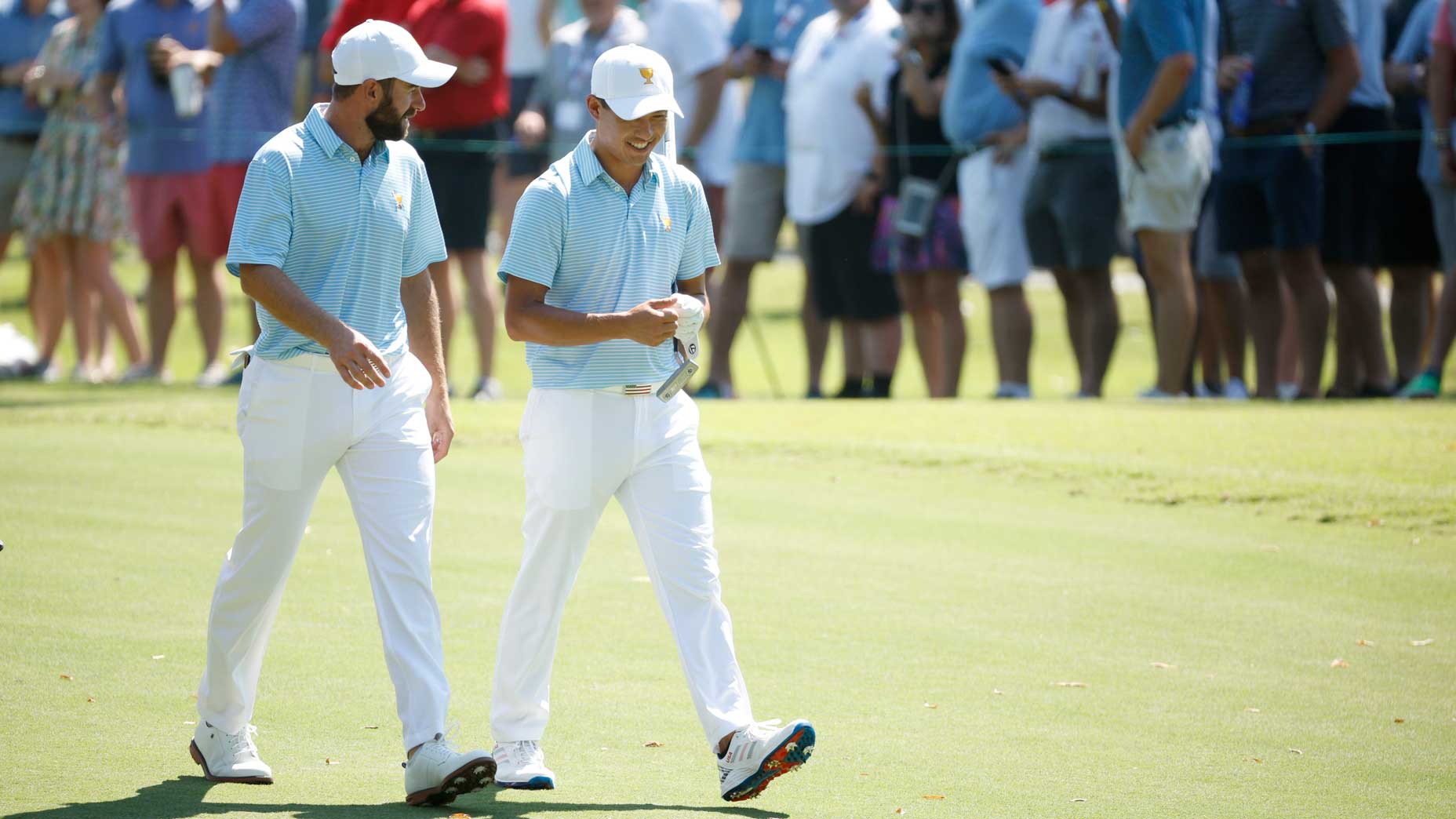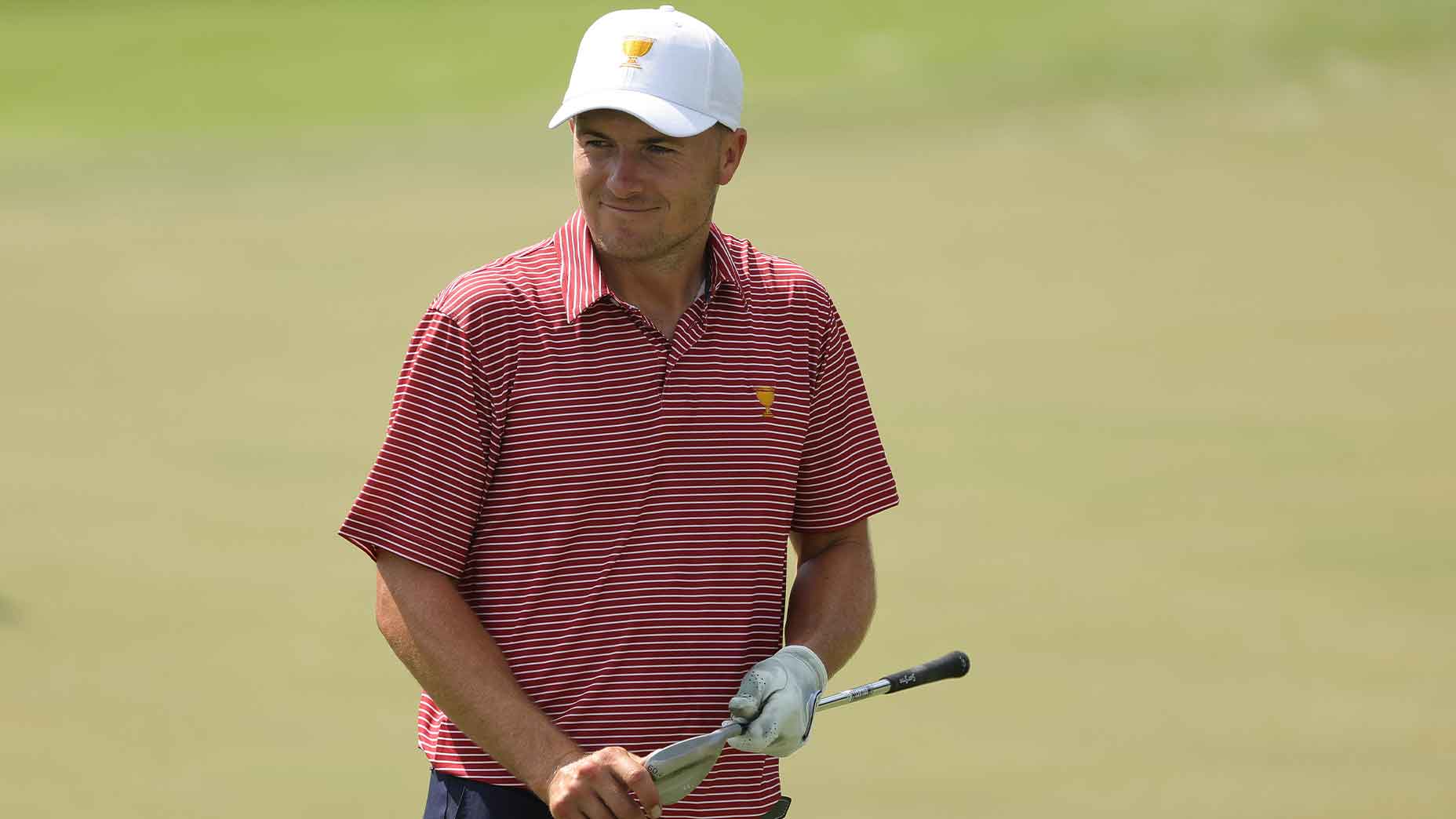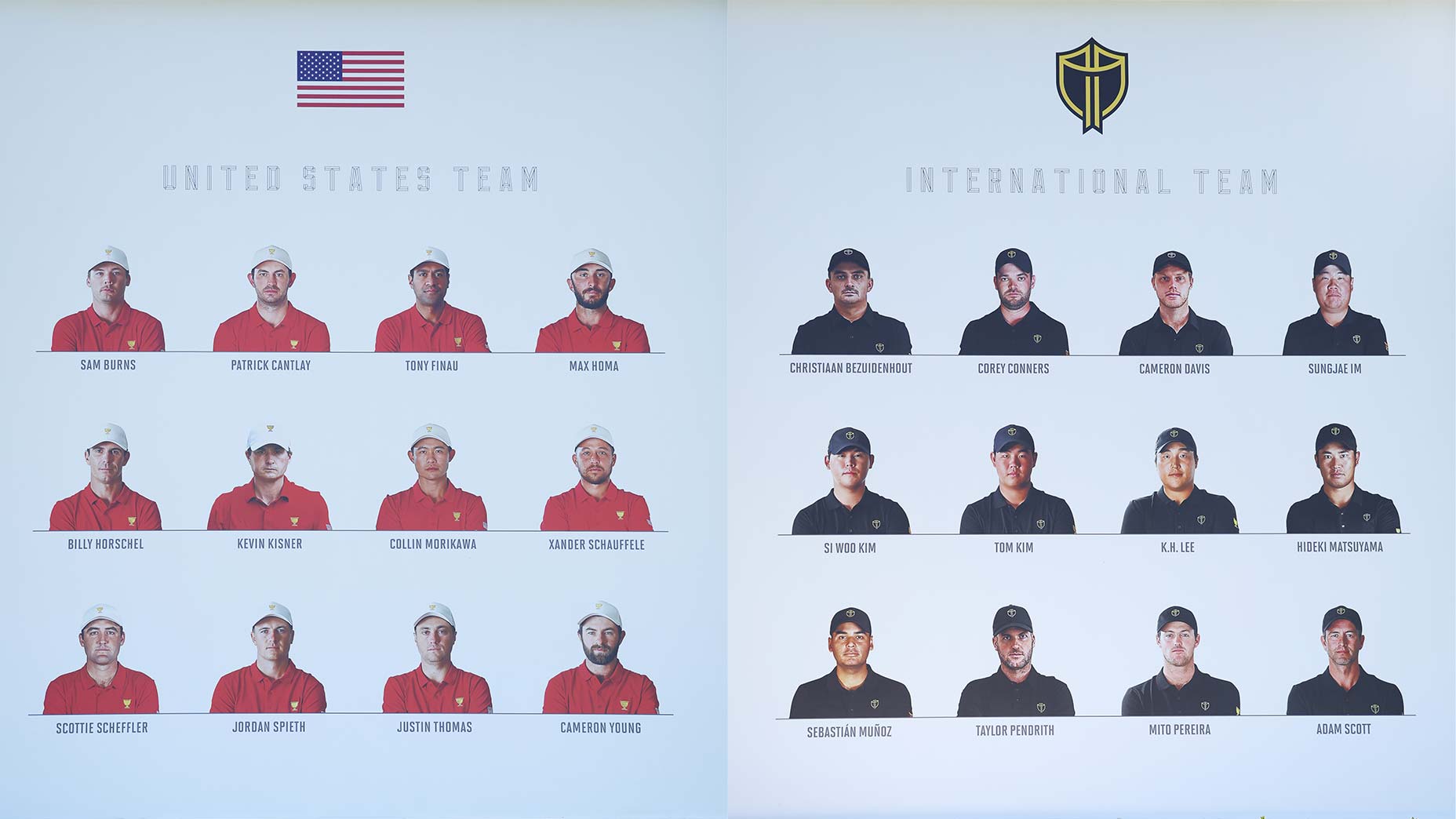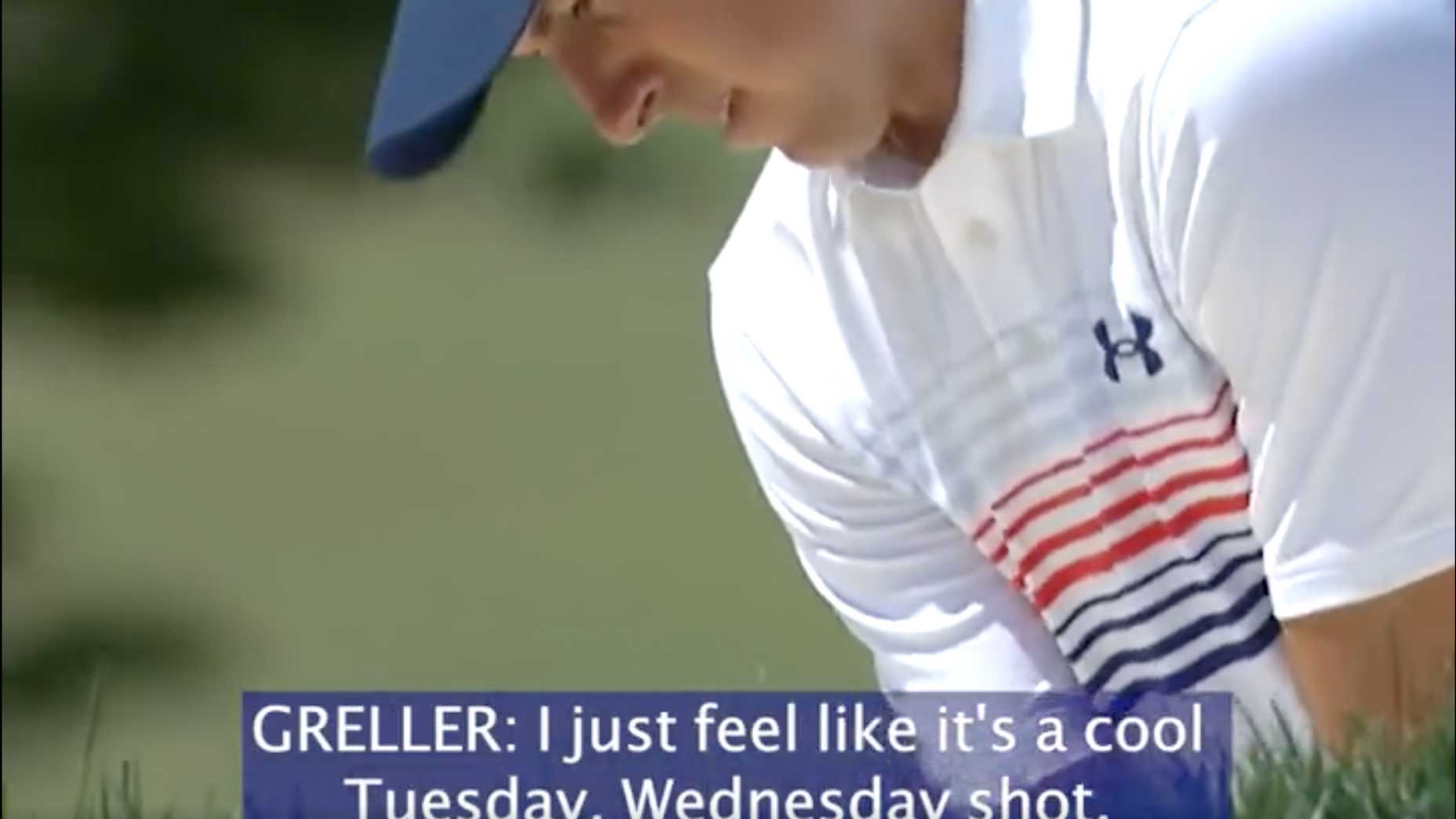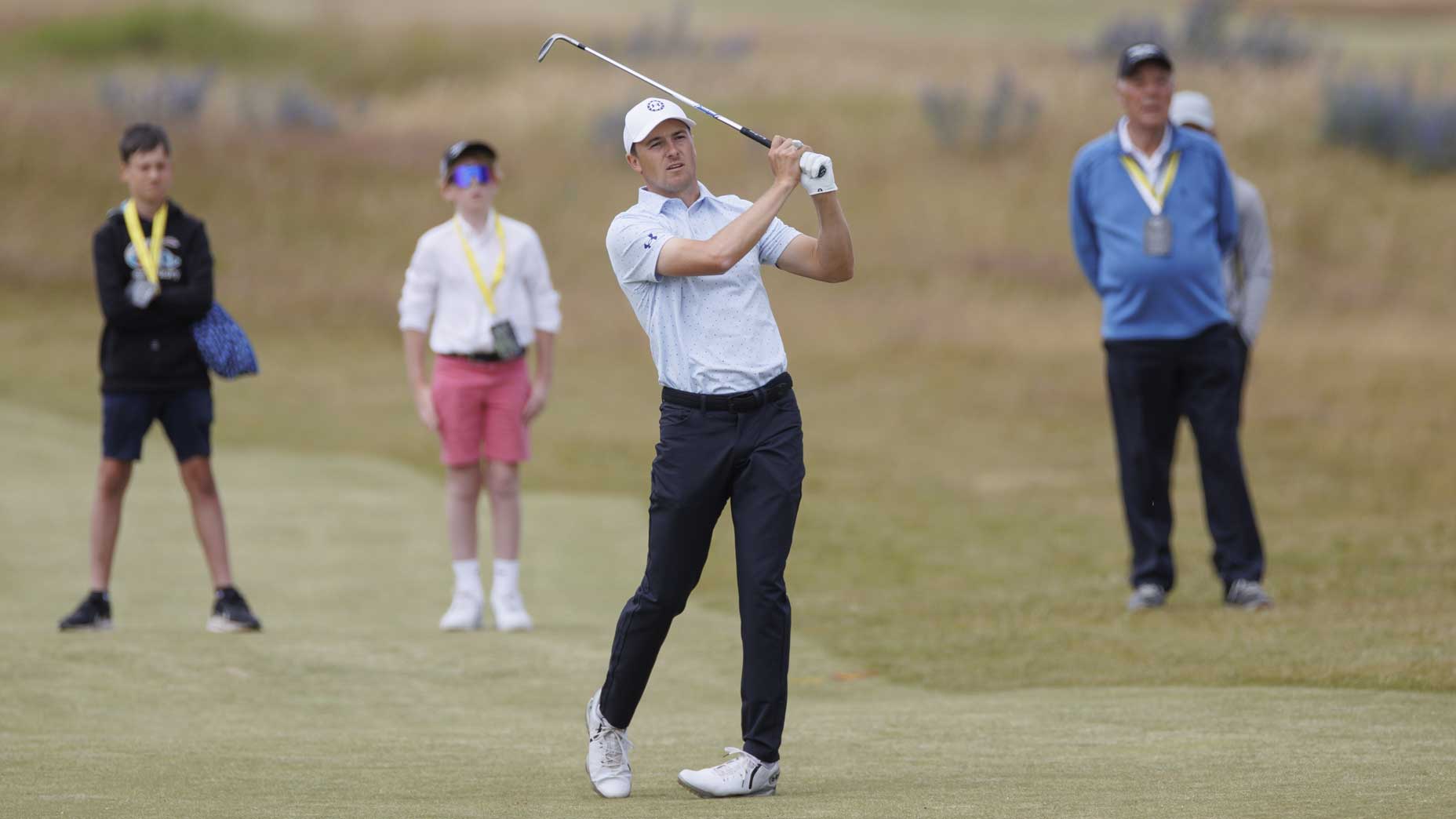Asked to predict the outcome of the big game the other day, Jordan Spieth said, “I don’t know. Anytime anyone counts out Brady, he seems to turn around and win.”
In that second sentence, Spieth surely knows you could replace Brady with Woods, with Jordan, with Jeter — and with a very few others.
Tour Confidential: Spieth’s resurgence, DJ’s dominance, deciphering the distance updateBy: GOLF Editors
But the first sentence is the telling one. All of sports are loaded with I-don’t-know. Most athletes aren’t willing to admit it. Spieth is. How refreshing.
He’s a breath of fresh air and has been for years.
I was rooting for Spieth on Sunday at Phoenix. (Yes, sometimes we root.) Unless your name is Jena or Chase, I’m guessing you were, too. Why do you suppose that is? Let us count the ways. (Roman numerals in honor of the big game.)
I. We know him.
Sometimes, the more you know people, the less you like them. With Spieth, it’s the opposite. To know him is to like him. As he has grown in fame and wealth, the core person has not changed. Respectful, patient, honest, loyal, real. That’s some starting point.
II. We got to know him in a time-honored way.
In professional golf, nothing reveals the player more than how he or she handles golf’s most important events on the most demanding courses. That is, the majors. Many of us first met (in a manner of speaking) Spieth when he was the low amateur at the 2012 U.S. Open at Olympic, as a (literally) pink-cheeked amateur. We were primed for the wins: the man-child at the 2015 Masters. The crazy 2015 U.S. Open at Chambers Bay. The 2017 British Open — crazier yet.
And what heart Spieth showed, to those he beat, to Dustin Johnson and Matt Kuchar in particular. (Not a Brady/Tiger/Jordan move.) Also, the vulnerability he displayed, evident both in the shots he played and the things he said, before, during and after. He was not programmed by a PR team, by overbearing parents, by a sports psychologist.

III. We got to know him better when he didn’t win.
And isn’t that far more telling? Jack Nicklaus’ deep grace showed up in his many second-place finishes (19 in majors alone). Spieth had a five-shot lead through 63 holes in the 2016 Masters, and went bogey-bogey-quad to begin the back nine. When it was over, he answered every last question. Ever since, he’s answered every question, signed for fans, been gracious with sponsors and the Tour brass, and didn’t say peep when Woods did not select him for the 2019 Presidents Cup team. I would have taken him in a New York minute.
IV. We got to know him even better when he slumped.
Woods had his reasons for not picking Spieth. He’s not a romantic, and Spieth’s play was consistently mediocre. (With occasional brief snatches of Jordan-of-yore.) Before the Waste Management event, he had fallen to No. 92 in the World Golf Ranking. He didn’t fire his caddie, part ways with his coach, make wholesale equipment changes. He didn’t panic. He didn’t forget how he got to be a three-time major winner in the first place. He continued to value his faith and his family above himself and his golf. To an outsider — to this reporter — he has looked painfully lost on the range at times. He kept the faith in every way.
V. He looks like a member of the family.
In terms of his dimensions, can you relate to Brooks Koepka, your Waste Management winner? I can’t. Can you relate to Tiger Woods or Dustin Johnson, or LeBron James or Tom Brady? Spieth is a strong kid, but he’s not superhuman. If he showed up at your Thanksgiving dinner, he’d pass you the cranberry sauce and you likely wouldn’t blink. He mocks his own receding hair line. His clothing is unmemorable. He doesn’t care.
VI. He’s clever.
After his Saturday 61 at Phoenix, which put him into a tie for the lead, he was asked what he would be “committed” to in his Sunday round. He said, “I’m committed to being committed.” That’s clever, insightful — call it what you will. It’s not every player who is going to string together those five words.
VII. He’s got Butch on his side.
You could practically hear Butch Harmon in Spieth’s head at TPC Scottsdale. Spieth, without insulting his lifelong teacher, Cameron McCormick, went to see Harmon, the legendary swing coach. Harmon is a one-of-a-kind teacher. He typically identifies only one swing issue at a time, and he builds players up mentally not with gobbledygook but with short, practical, macho pep talks.
Butch Harmon on Jordan Spieth: ‘All I did was give him my opinion’By: Nick Piastowski
From what I’ve been able to gather, Harmon pinpointed one element of Spieth’s swing that he needed to focus on: the transition from backswing to downswing. When things are going bad, you want to work on bunches of things. If you’re smart, you get it down to one, maybe two, elements of the swing.
Harmon also reminded Spieth of something that even a future Hall-of-Famer might forget. You’re Jordan Spieth. Whose record would Justin Thomas rather have, his own or Spieth’s?
VIII. He’s wild.
It seems like half his shots were played with a swimming pool in his backswing and a cart-path curb in his follow-through. And that was on Saturday, when he shot that 61.
Jordan Spieth: Swing work has been ‘a difficult process’By: Nick Piastowski
IX. He’s realistic.
After shooting a Sunday 72, leaving him in a tie for fourth, Spieth said, “I was comfortable in the position I was in. And that’s a very new position for me. Because it’s been a little while.”
X. He has a sense of balance.
On Sunday, his tee shot on the short par-4 17th seemed to take about an hour to land on the fairway in front of the green, roll across the green, inch its way downward through frog hair and into a pond. He needed a 1. He was dropping for 2 instead. But he looked at Michael Greller, the only caddie he’s had on Tour, and smiled. Sometimes bad things happen to good shots and there’s not a thing you can do about it.
One last thing: as Spieth says, anytime somebody counts out Brady, he seems to win. You could say the same of Tiger Woods, and you could say the same of Brooks Koepka. They’re athletic machines.
Can you say the same of Spieth?
You cannot. In my book, that’s Reason No. XI.
Michael Bamberger welcomes your comments at Michael.Bamberger@Golf.com
